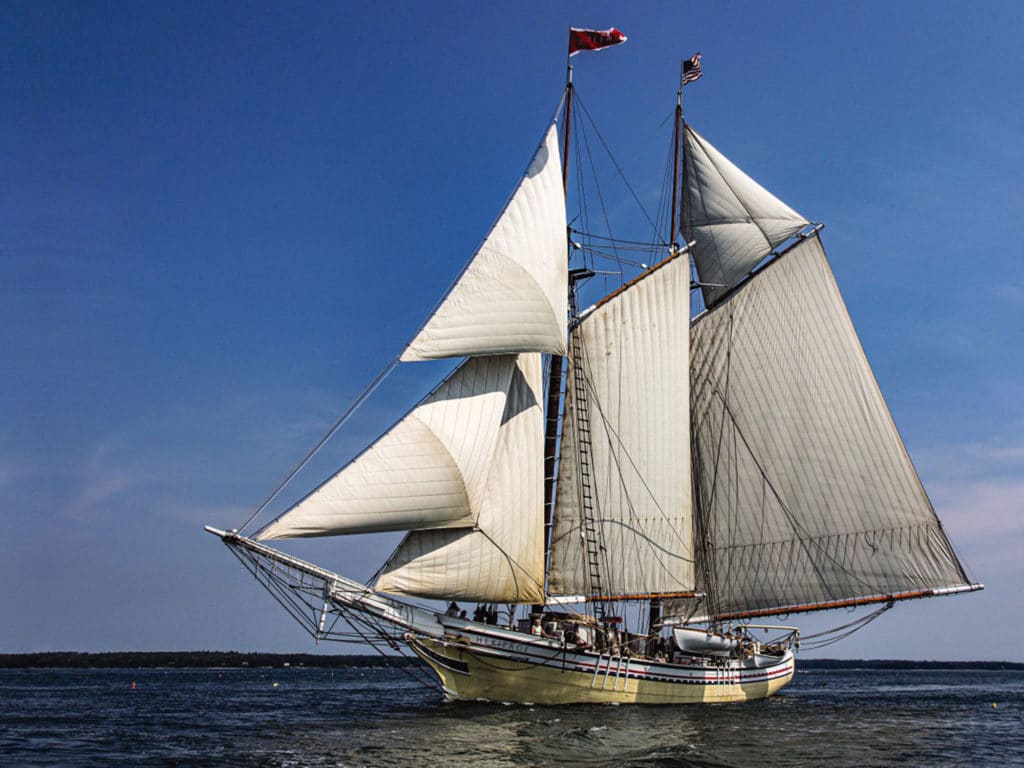
From our back porch in Annapolis, Maryland,we gaze out on 6 miles of the Chesapeake Bay at the mouth of the Severn River. On a good summer weekend, we’ll see scores of sailboats milling about—hundreds if a big regatta is on. Some will catch the eye and get you to take a longer look. But only one stops me in my tracks every time.
Well, two, actually: the schooners Woodwind I and II. They are swan-white 74-foot twins that carry tourists on two-hour cruises daily from early spring to late fall. They’re just too pretty to ignore.
So it is with schooners. There’s something about the beamy, swooping hull shape and the dynamic angle of the rig that demands special notice. With a short mast forward and the tall one aft, the sail plan looks like a butcher’s knife cleaving the wind. When all the canvas is up and pulling—two or three jibs, foresail, topsails, and main—these graceful boats carry an air of timeless utility and majesty.
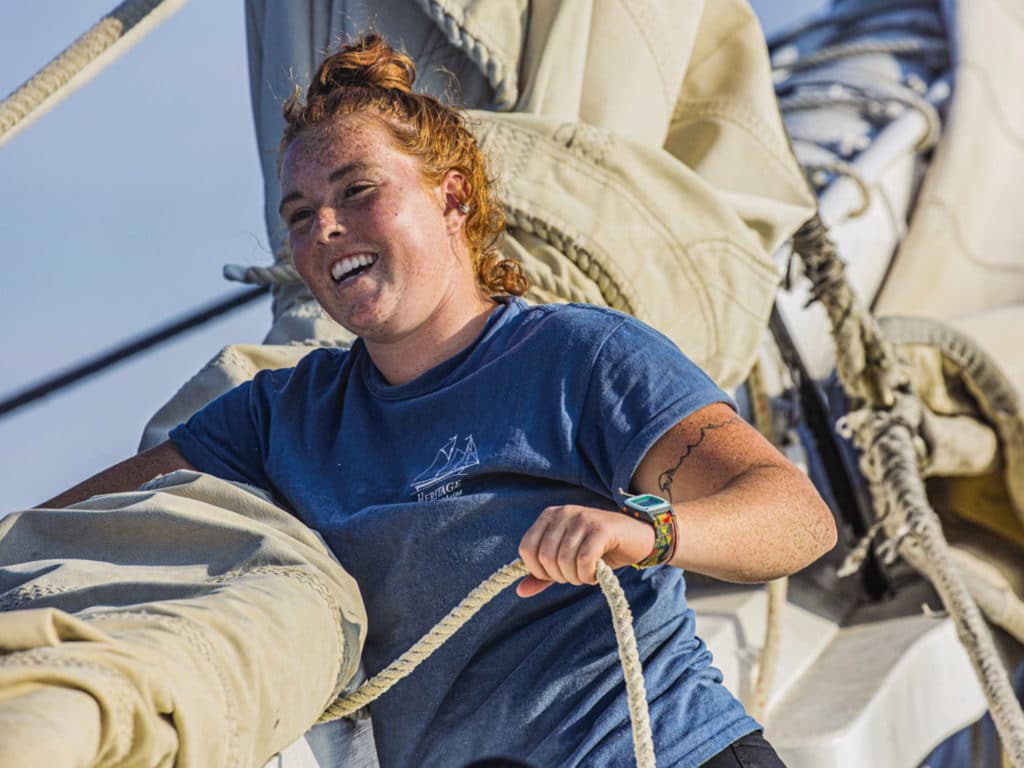
Imagine the scene 150 years ago, when schooners by the hundreds roamed the coast, laden with cargos of lumber, coal and other dry goods. What a sight to see them tacking and jibing off Cape Hatteras, North Carolina, or Provincetown, Massachusetts, killing time waiting for a fair breeze to make the rounding.
No boat is perfect, of course, and schooners have their downside. Fred Hecklinger, the late guru of wooden boats around the Chesapeake, used to say, “If you love schooners, get a picture of one and put it on your wall.” It was his way of acknowledging that for all their beauty, schooners of old were also heavy, not particularly good at going to windward, and relatively slow except on a screaming reach.
There’s only one place left on the East Coast where you can reliably see a gaggle of schooners hard at work on any summer day, and that’s Penobscot Bay off midcoast Maine. A dozen or so of the wooden beauties up to 100 feet long charter, offering four- to six-day trips out of Rockland and Camden. Smaller ones run daily excursions. A few are purpose-made for the charter trade, but most are meticulously maintained relics of the freight-carrying past, including two—Lewis R. French and Stephen Taber—that each turned 150 years old in 2021.
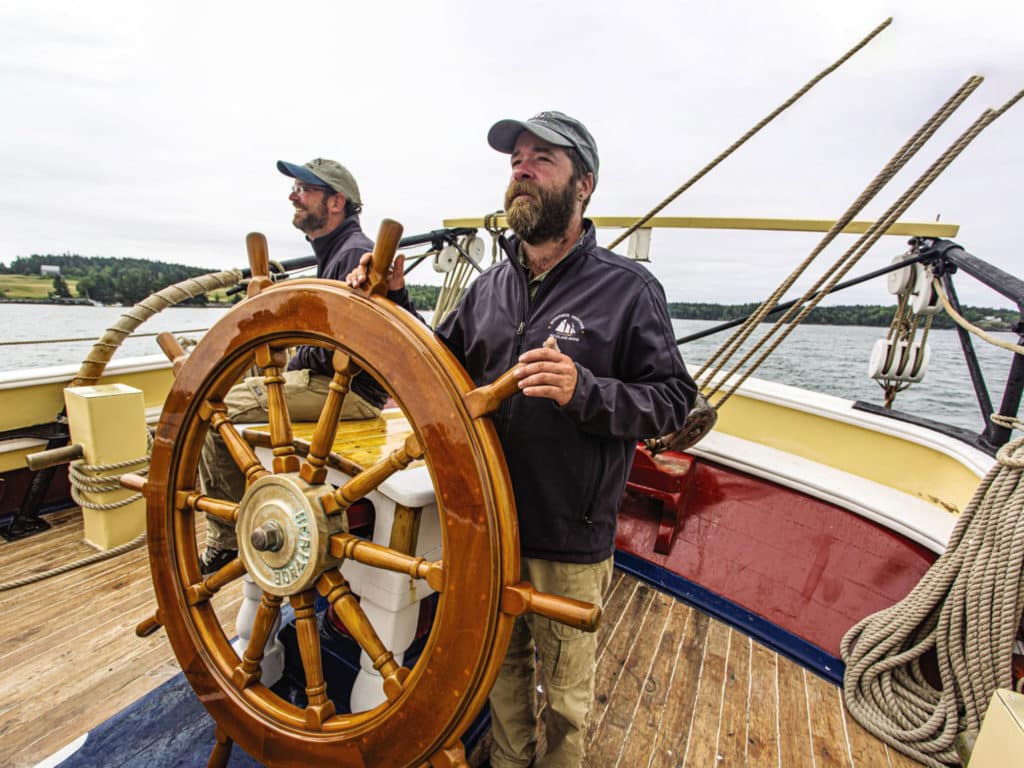
Schooners hold a special place in my heart because they’re where I caught the sailing bug. Sixty years ago, my father and I took a four-day trip on Mattie out of Camden, Maine. It was the first overnight sailing trip for either of us. We drove up from Long Island, New York, stopping at Cape Neddick, Maine, where I cracked my first lobster claw. We boarded that night for early departure next morning. I was 16.
Mattie’s new owner and captain was a slim fellow named Jim Nesbit, who showed us around what would be our humble digs for the next few days. Mattie was then 78 years old, having launched in 1883 in Patchogue, New York, just 37 miles from our Long Island home.
The old freighter had few amenities. Lights were kerosene, and cabins were tiny and had no portholes. The head was dark and airless. Meals, including daily fresh bread, were cooked on a cast-iron wood stove. Passengers ate on deck or in a dim, low-slung main cabin. Back then, there were no electronic navigation aids, so when fog swept in, you made your way to the next anchorage by guess and by God, with a man in the bow sounding the mournful foghorn while peering through the mist for danger.
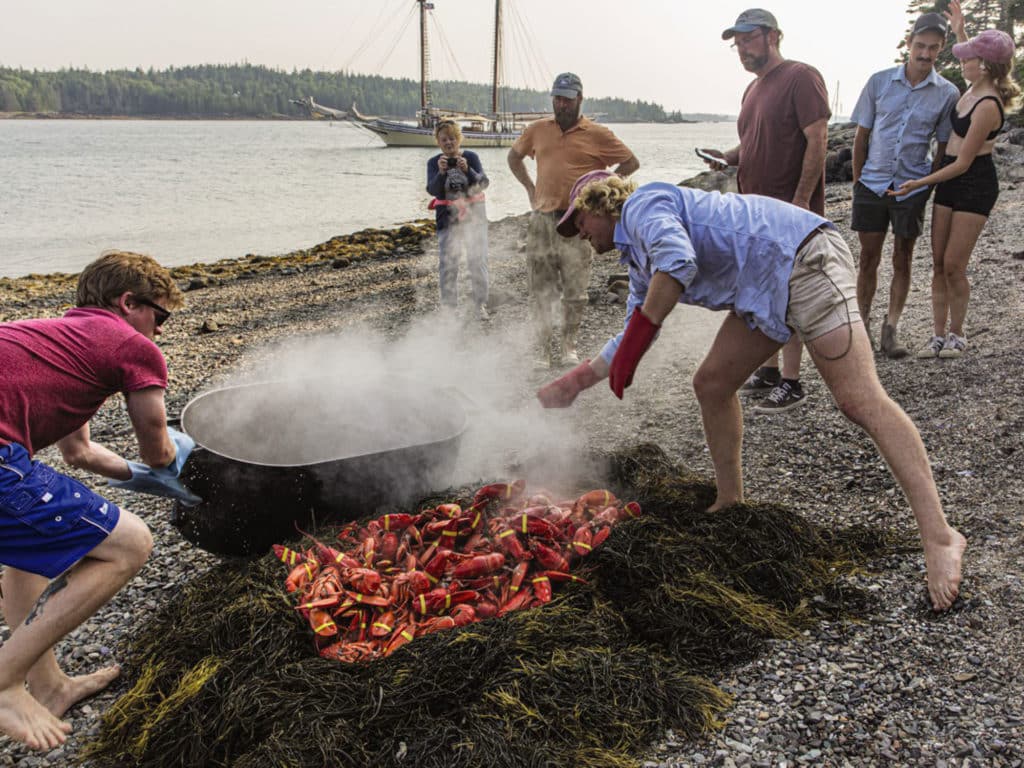
We found our fog the third day out, thick as soup. I was a nervous rabbit, so when we finally heard the clang of a bell and then saw a green buoy heave up through the mist as proof that we were safe, the moment of relief and joy formed my lasting attachment to sailing and the sea.
Advance the log by 60 years, to 2021, and little has changed. We’re back in the same cold, clear waters off Vinalhaven, Maine—the biggest island in Penobscot Bay—and the fog is back, thick as ever but no longer quite so scary. We know where we are thanks to electronics. The chart plotter inside a varnished box near the helm shows precisely where we’re going.
Everything else remains much the same. A starry, moonless sky at midnight. The gauzy curtain that hangs as dawn gives way to misty day. A protected cove at daybreak with no breeze, ripples emanating from a circle of bait as little fish spin nervously on the surface and seals lurk below, popping up to grab a snack. Eagles and ospreys wheeling overhead; terns squawking and dipping for minnows; black guillemots, a northern seabird, paddling along the bank.
A dark blockade of spruce lines the shore, ending in a band of pale granite, beneath which sweet-smelling seaweed clings from the high-tide line down to the ocean, which will rise and fall 10 feet and more with the diurnal pull of the moon.
Then there’s our boat itself, pretty as a picture once the sails are up and pulling.
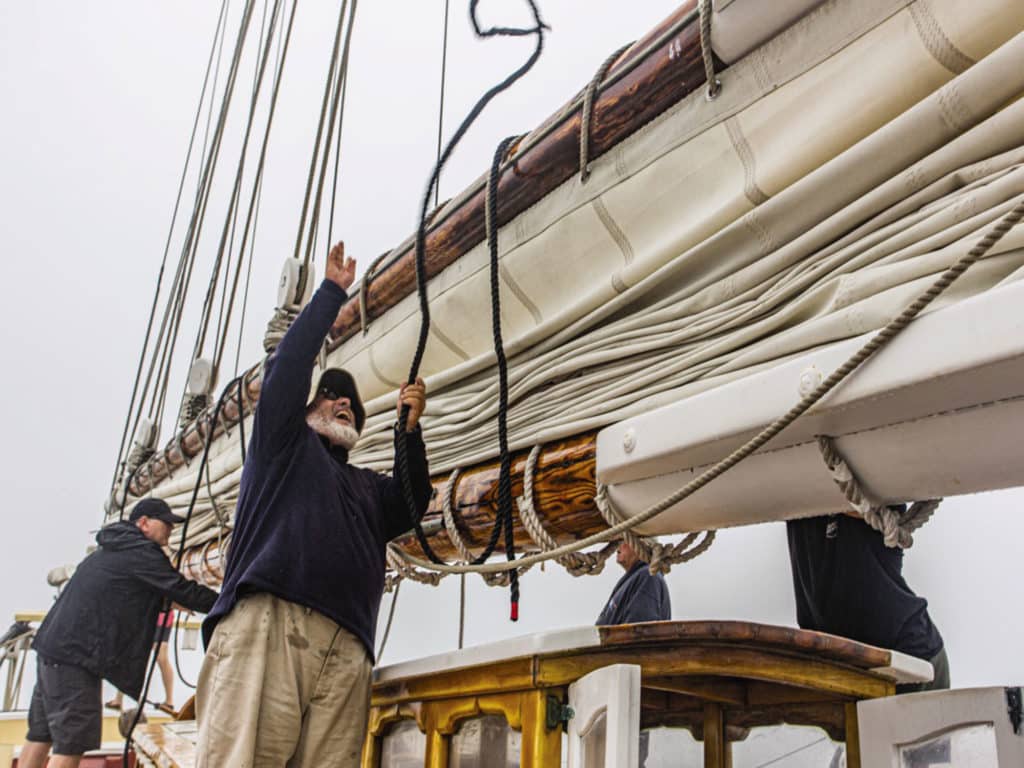
When my wife, Fran, and I decided to take a trip back in time this past summer, the schooner we chose was Heritage, out of Rockland, Maine. It’s one of the bigger vessels in the modern fleet at 95 feet on deck, and one of the newest, launched in 1983. It’s the creation of Capt. Doug and Linda Lee, who built the boat over three years in the boatyard they own at the foot of Front Street.
If the Lees took advantage of modern technology in construction, you couldn’t tell by looking. Heritage weighs 165 tons. The frames and hull are oak, steamed and bent to shape. The decks and cabin tops are straight-grain pine. Heritage has no engine for propulsion; to get in and out of tight spots, this vessel (like most in the fleet) uses a diesel-powered push boat that tucks quietly under the stern.
The Lees did have the advantage of designing Heritage for people, not freight, so they could fashion a central cabin for dining where everyone can sit at once, instead of in shifts. Other than that, this is a traditional Maine schooner, stem to stern. Meals are prepared on the antique wood stove, and sails are heavy canvas. To raise the weighty gaffs, sails and anchor, the crew fires up Old Joe: a 1921, make-or-break, single-cylinder donkey engine that the Lees rebuilt from junk. It snorts like a misfiring freight train.
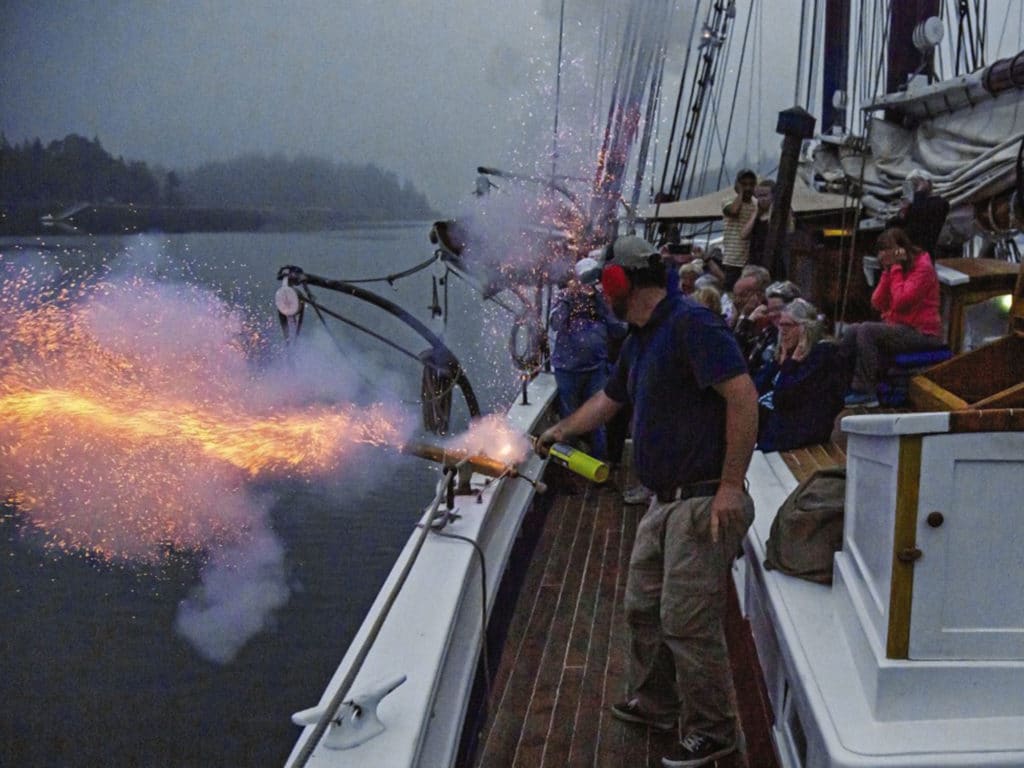
Twenty-nine of us, a full house, paid to board this sturdy anachronism to stuff ourselves into cramped cabins, to clamber up the companionways in the dark to use the head, and to wait our turns for the only bathing facility: a showerhead on the end of a flexible tube in one of the three heads.
Missing, sadly, were the Lees, who sailed Heritage for 37 years after they built it. Now in their 70s, they sold the schooner to two crewmen in 2020, when chartering was suspended in the pandemic.
Fortunately for the new owners, 2021 proved a boom year, as vacationers looked for holidays closer to home. I don’t remember it, but Fran says that I came home the day in March when I got my second vaccination shot and announced that we were going schooner sailing in Maine.
You might wonder why a couple with their own cruise-worthy sailboat (albeit small, at 27 feet) would drive 11 hours to get on somebody else’s boat with a crowd of strangers. The answer is uncomplicated: The food is plentiful and good; the scenery is incomparable; the company is generally soft-spoken; and it’s nice to find yourself in the hands of competent, cheerful young people whose main interest is keeping you safe and happy. You know, instead being the one who is fretting about rocks and tides and fog.
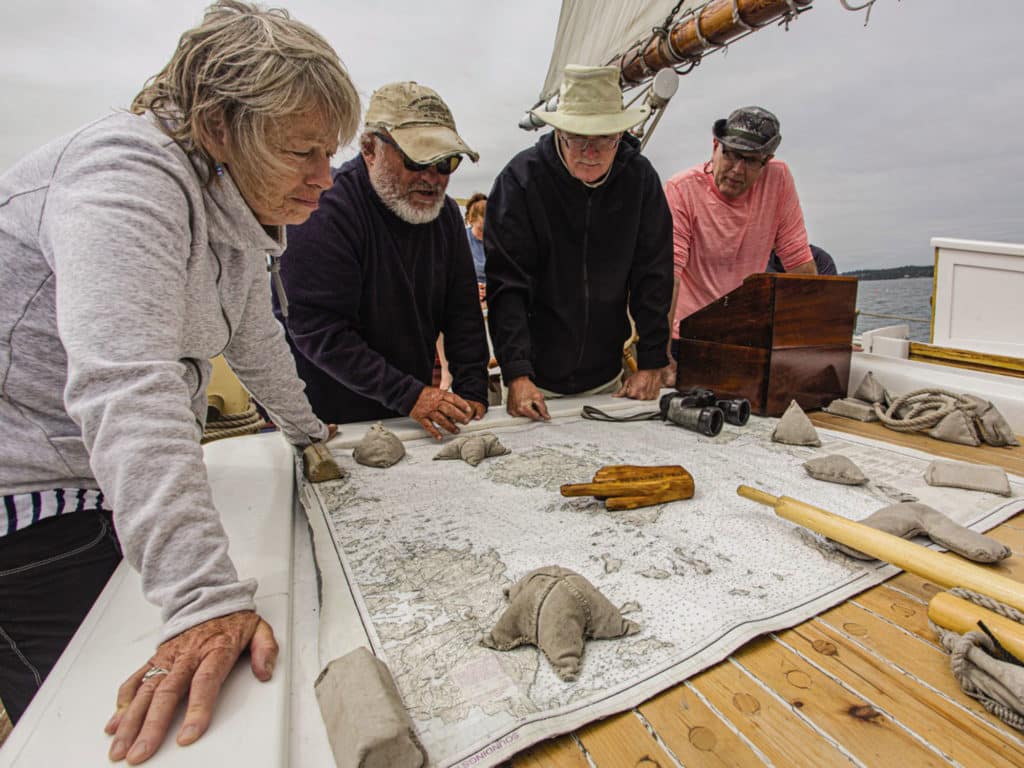
The new co-skippers of Heritage are a pair of bearded, scruffy, 30-something bachelors who worked for years on the vessel, and who seem as devoted to tradition as the Lees were.
Capt. Ben Welzenbach was teaching guitar in Chicago nearly a decade ago when his dad took him on a father-son trip on Heritage. As soon as he got home, Welzenbach sent a job inquiry. He was on the deck crew the next season.
Capt. Sean Grimes was a line cook in a southern New Hampshire restaurant when a buddy dragged him to Maine and introduced him to schooners. The next year, he ran the wood stove on Heritage.
Welzenbach had the helm and Grimes was in the push boat when we departed Rockland under a mackerel sky and little breeze. Passengers ranged in age from 15-year-old Cassidey Card of Connecticut, tagging along with her grandparents, to 85-year-old Faith Hadala of Tennessee, who quizzed anyone who looked like they might be in the running to make sure she was indeed the oldest.
Hadala was with her 84-year-old husband, Paul. Her first marriage lasted 17 years, she said. The second also lasted 17. She and Paul had been together 16 years. “We’re waiting to see what happens next year,” she said with a chuckle.
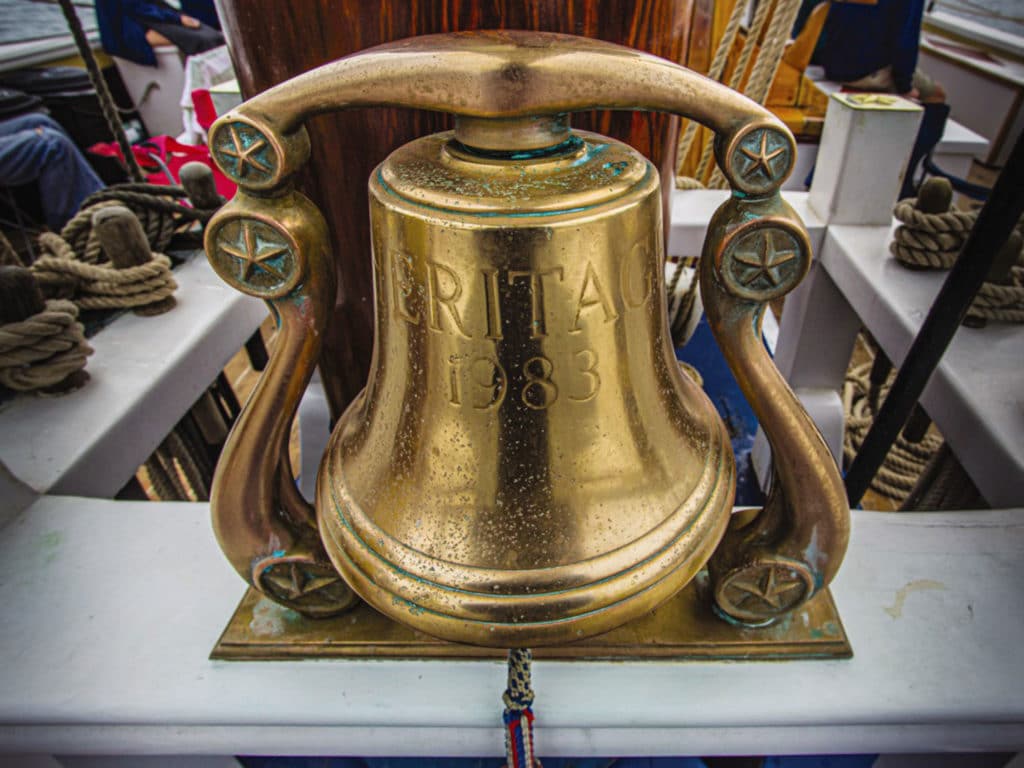
Schooner trips skew to the upper age brackets. You won’t find many go-go, 40-something J/70 racers from Scarsdale, New York, on the passenger list. They’re more likely down in St. Martin sipping Red Bull and vodka on a Caribbean beach.
But you still do get characters, like Bo Kinsman, a lobsterman from Ogunquit, Maine, who takes a week off every month in summer to sail on Heritage. He likes going from having to do everything on his boat to doing nothing on the schooner. A ringer for Ernest Hemingway with his silver fringe beard, gimlet eyes and battered fishing cap, he usually works alone tending 400 pots on a 32-footer.
He surprised us when we stopped the first night at tiny Burnt Island for our lobster bake, a staple of every Maine Windjammer cruise. We had 65 live lobsters in a tank; the crew steamed them over a wood fire in a blanket of seaweed plucked from the rocks. They were unbelievably fresh, and you could eat all you wanted. Kinsman took none. He chose hot dogs and burgers. “I don’t eat lobsters,” the lobsterman sniffed.
There were other bright lights in our thrown-together crew. Steve Berthiaume, who builds flutes in Massachusetts for a living, brought a travel guitar and led singalongs at night while his wife, Kim, sang nice harmonies. Suzanne Farace, a divorce lawyer from Baltimore, spun yarns about previous kayak-camping trips she’d made in Penobscot Bay. Her paddling partner, John Garon, told of his days as a spy in the National Security Agency—no state secrets but good palaver nonetheless. Jill McConnell of upstate New York jumped in and swam around the boat for an hour one evening, as if we were in the Bahamas, which we certainly were not.
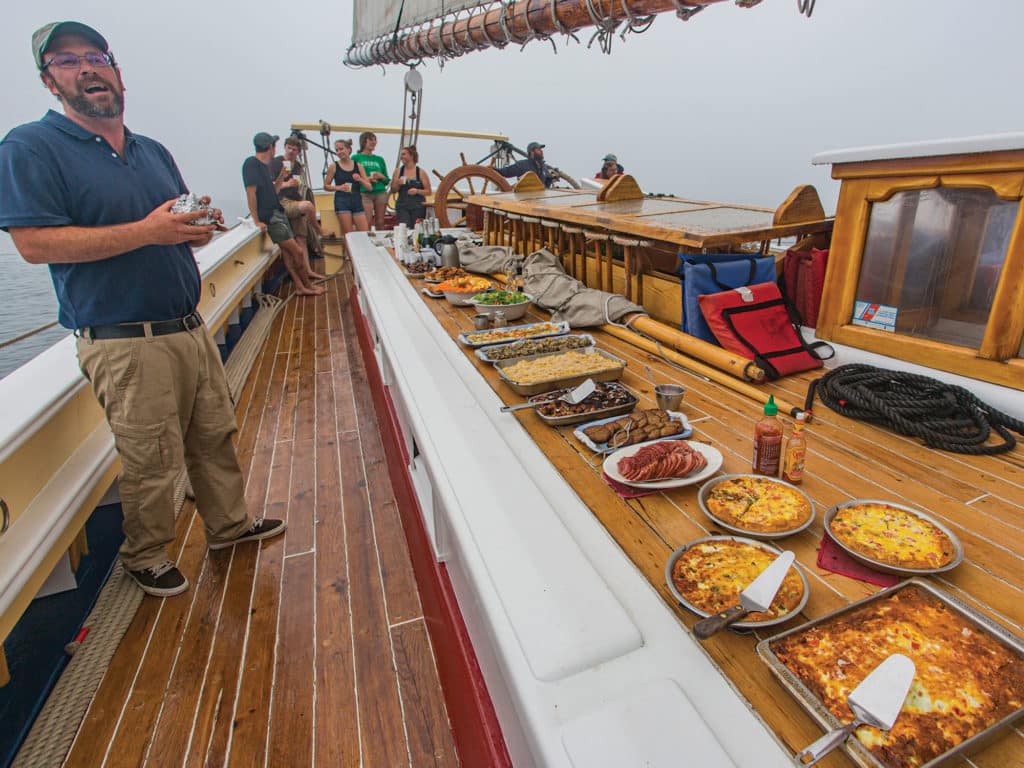
The crew were young, with interesting lives. Ginger-haired Courtney King was born to the sea: Her parents own the schooner Mary Day out of Camden, and she’s working on her own master’s ticket at Maine Maritime Academy. She hopes to buy a small schooner to live on. Kyle Gray was working long hours at a commercial real estate firm in New York when he decided to kick over the traces and work long hours climbing the mast on Heritage instead. He’d be heading to the University of Pennsylvania to study education policy in the fall.
Our cook, Stephanie Cech, was a wiry small-boat racer in Ohio when she got the urge to head east. Everything she knew about cooking meals for 35 people on a wood stove she learned in a few weeks from Capt. Sean, who rose at 5 every morning to help her start the fire. It was fun watching her pound out huge blobs of dough for the daily bread.
Jeremy Schmich was bored writing software code for a living. Now, he’s in charge of Old Joe, the donkey engine, and arms himself with an oil can and ether spritzer to get it going. “First time, every time,” he chanted while spinning the flywheel with one hand and tickling the compression release with the other, hoping for the chug-chug-BAM that signaled success.
We never got much wind. Usually in Maine you can count on an afternoon southwesterly sea breeze, but this year was fickle, Capt. Ben said. Yet, the push boat was quiet enough that you barely knew it was running, and the sails were up all day to catch any breeze that came along. The scenery never disappointed. At 68 degrees, the water was warm enough for the bold to swim. And three lovely old rowboats were launched at each anchorage for exploring the shore.
All in all, it was a memorable trip. Yes, you could occasionally hear the guy in the next cabin snoring, and the shower situation took some getting used to. But there is much to admire in a place that has changed little in 150 years.
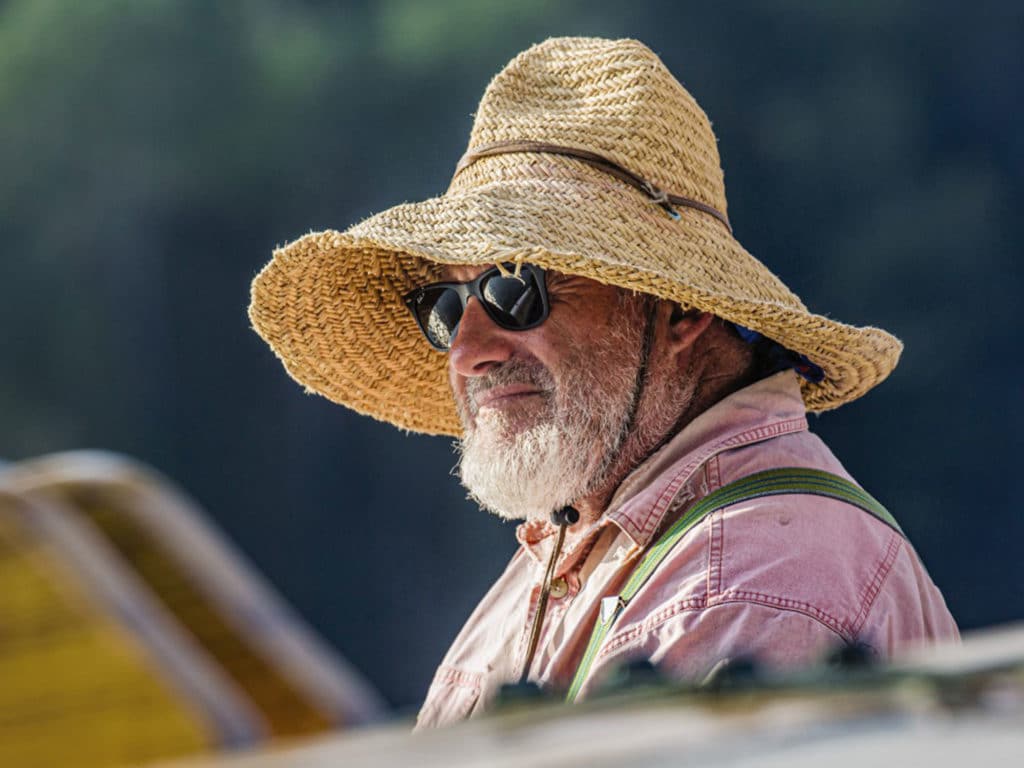
The Maine charter trade for schooners was hatched in 1936 by a 20-year-old entrepreneur named Frank Swift, who saw the sailing fleet moldering away as motor vessels took over. He wondered if a boat could be cleaned up and pitched to adventurous vacationers as a cruise ship. He found a skipper and a boat, dubbed the enterprise Windjammer Cruises, and sold the first trip to a trio of ladies from Boston who paid $35 for a week on board.
Twenty-five years later, when I got my sea legs on Mattie, an industry was already in place. It’s still thriving today. I asked Courtney King if Mattie was still around. “Oh, sure,” she said. “She’s out here doing the same thing we are. She’s still running out of Camden. They changed her name, though, back to the original: Grace Bailey.”
She tugged on my sleeve the next day and gestured across the sparking sea to a sailing relic, shining proud and going strong at 138 years of age. “There she is,” she said. “There goes the old Mattie.”
Angus Phillips is a longtime Chesapeake Bay-based racing and cruising sailor, former outdoor columnist for TheWashington Post, and frequent contributor to CW.








